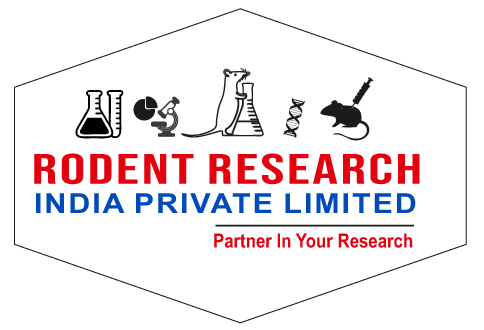Mice Health Monitoring Program
A continuous mice health monitoring program is essential for maintaining animal welfare, ensuring the validity of experimental results, and complying with ethical and regulatory standards. It integrates routine clinical observation, microbiological surveillance, and environmental assessment into a systematic process.
1. Clinical Surveillance and Daily Monitoring
Mice are observed daily by trained personnel for signs of illness, distress, or abnormal behaviour. This includes checking for:
- Coat condition, posture, grooming behaviour
- Weight loss, dehydration, hunched posture
- Laboured breathing, lameness, or neurological signs
- Reduced food or water intake
Observations are documented daily, and any deviations from normal are reported immediately to the veterinary staff or animal care supervisor.
2. Body Weight Monitoring
Mice involved in experiments, especially those involving drugs or surgery, are weighed weekly or biweekly. Significant weight loss (>15–20%) is a clinical red flag requiring immediate intervention.
3. Sentinel Program
The sentinel program is a proactive surveillance system designed to detect subclinical infections in the colony. Key features include:
- Placement of sentinel mice (usually 2–3 per rack or room) in cages that receive soiled bedding from colony cages weekly.
- Sentinels are monitored for a minimum of 12 weeks to ensure exposure to any latent pathogens.
- At the end of the exposure cycle, sentinel mice are euthanized, and tissues or blood samples are collected for serological and molecular testing.
4. Microbiological Testing
Testing is done quarterly and includes:
- Serology: To detect viral infections such as Mouse Hepatitis Virus (MHV), Mouse Norovirus (MNV), Sendai virus, etc.
- PCR (Polymerase Chain Reaction): For rapid detection of bacteria like Helicobacter, Mycoplasma pulmonis, and parasites like pinworms.
- Culture and Microscopy: For identifying bacteria and ectoparasites (mites, lice).
5. Quarantine and Incoming Animals
All new animals are subjected to a strict quarantine period, typically 1 week, during which they undergo:
- Health status review and documentation from the supplier
- Faecal PCR or pinworm examination
- Serological screening as applicable
Only animals cleared of all pathogens are allowed into the main colony.
6. Environmental Monitoring
We maintain stable and mice-appropriate housing conditions.
| Parameter | Frequency | Method |
| Temperature & RH | Daily | Thermo-hygrometer |
| Ammonia levels | Weekly | Ammonia strips |
| Light/dark cycle | Daily | Automated control |
| Noise | Weekly | Auditory check |
| Cage/bedding status | Daily | Visual inspection |
Record: Environmental Conditions Log
7. Recordkeeping and Data Review
All monitoring data are documented in standardized health monitoring forms or digital systems. These records are:
- Reviewed monthly by the veterinary and animal facility management teams.
- Used to identify trends, potential outbreaks, or health declines early.
8. Emergency Response Protocol
If a sentinel or colony mouse tests positive for a pathogen:
- The affected area is quarantined.
- Immediate risk assessment and confirmatory testing are conducted.
- Remediation strategies may include depopulation, rederivation, or treatment (if permitted).
9. Review and Quality Assurance
The health monitoring program is reviewed annually and updated based on:
- Changes in experimental demands or mouse strains
- Updates in FELASA/CCSEA/AAALAC recommendations
- Internal audit findings and IAEC feedback





